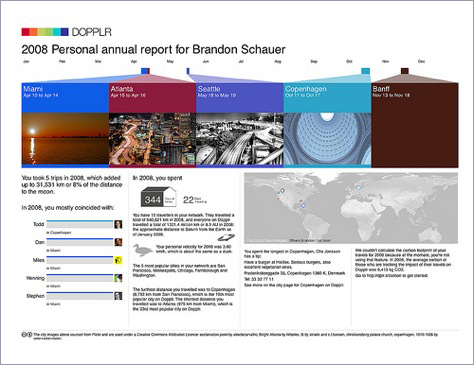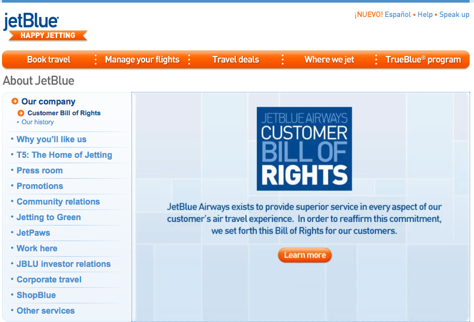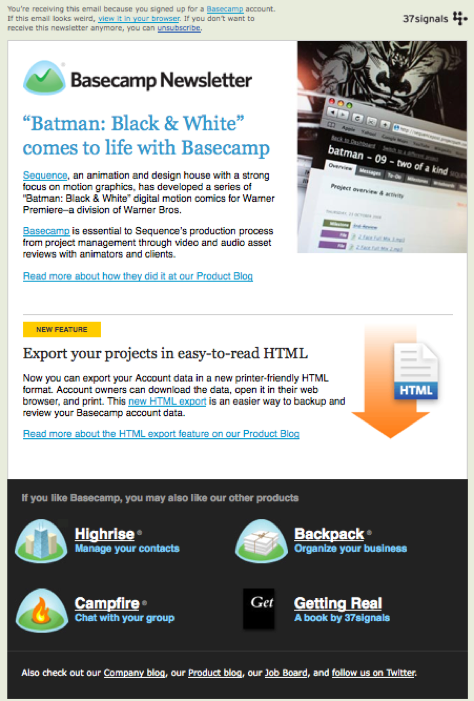Content Comes from and Represents People
“People don’t relate to companies, they relate to people,” says Zappos CEO Tony Hsieh. [2] The Zappos solution is to employ real people who are readily available to communicate with customers by phone, Twitter, and more. These people are well trained and enthusiastic, and Zappos encourages them to spend time with customers. I applaud the Zappos approach. At the same time, this approach does not replace the need for self-service or automated means of managing customer relationships. In my experience, some customers strongly prefer interacting with a person, while others strongly prefer doing things themselves—and some customers may prefer either option, depending on the task, topic, or context. However, the Zappos approach signals a change in perspective on customer-relationship content that other companies would do well to emulate.
In a recent Webinar, content expert Ginny Redish suggested a new perspective, calling for UX professionals to “shift the focus” on content by viewing it both as critical and as a conversation with users. [3]
This change in perspective means content that supports customer relationships is not merely documentation or filler or marketing blast or user interface. It is an extension of a company’s best people. Viewing content in this way implies that content should, among other things
- sound human, not machine-like
- be helpful
- have an appropriate tone
- reflect social norms such as politeness
- represent the company’s personality and values
The more a company’s content acts like its best people, the better customers will relate to it.
The Right Content Makes Customer Relationships Thrive
Clearly, content plays an important role in connecting a business with its customers. Yet, many companies fail to approach content from that perspective. Often, if companies do put effort into content, they focus their effort on winning new customers. Microsites and landing pages provide a couple of examples of this. This is not enough. Most businesses, especially those offering services, depend on establishing customer relationships that last a while. Businesses must continually win the loyalty of their customers. One of the most effective ways in which businesses can win customers is by communicating well—that is, through good content.
In this view, I am not alone. Forrester analysts consistently state that content is important to the customer experience. Their report “The Persuasive Content Architecture” notes, “Customers want faster responses to requests, more conversational interactions, and more relevant content.” [4] Likewise, “Use Persuasive Content to Improve the Customer Experience” states that companies “can drive significant improvements in customer experiences. How? By putting more emphasis on using content to help customers—whether it is providing relevant information when customers buy a product or delivering easy-to-use and understandable content for customer self-service Web sites—rather than simply focusing on how to create, manage, and search for content.” [5] (Emphasis in both quotations is mine.)
Now, considering content as the way to cultivate customer relationships raises some important questions.
Doesn’t CRM (Customer Relationship Management) or CMS (Content Management System) technology do this?
These technologies, as well as the business rules driving them, are critical to efficiently supporting customer relationships. They let us manage, personalize, and optimize Web content on a large scale. However, use of these technologies alone does not make communication with customers more effective. In other words, businesses cannot merely invest in a CRM or CMS product and expect excellent communication to happen automatically. Businesses must still craft their communication’s content. The recent Forrester report “Stop Managing Content!” states, “Web content management (WCM) efficiencies…remain important, but they pale in comparison to the need to create Web sites that engage, persuade, and help visitors achieve their goals.”
Doesn’t improving the product or service do this?
A true improvement to a product or service, not mere feature creep, does help customer relationships. However, communication between customers and the business is and always will be a substantial part of the customer experience. It sustains the customer relationship. (For more detail about why I think communication largely is the customer experience, see my first UXmatters column “Rediscovering Communication.”)
Think of trying to fuel your body for a marathon with a diet consisting only of Twinkies. Improving your running technique, but continuing to eat only Twinkies would not help you to run much further. Without the right variety of good foods, you could not run for long. Without the right variety of good content, your customer relationships do not go the distance.





